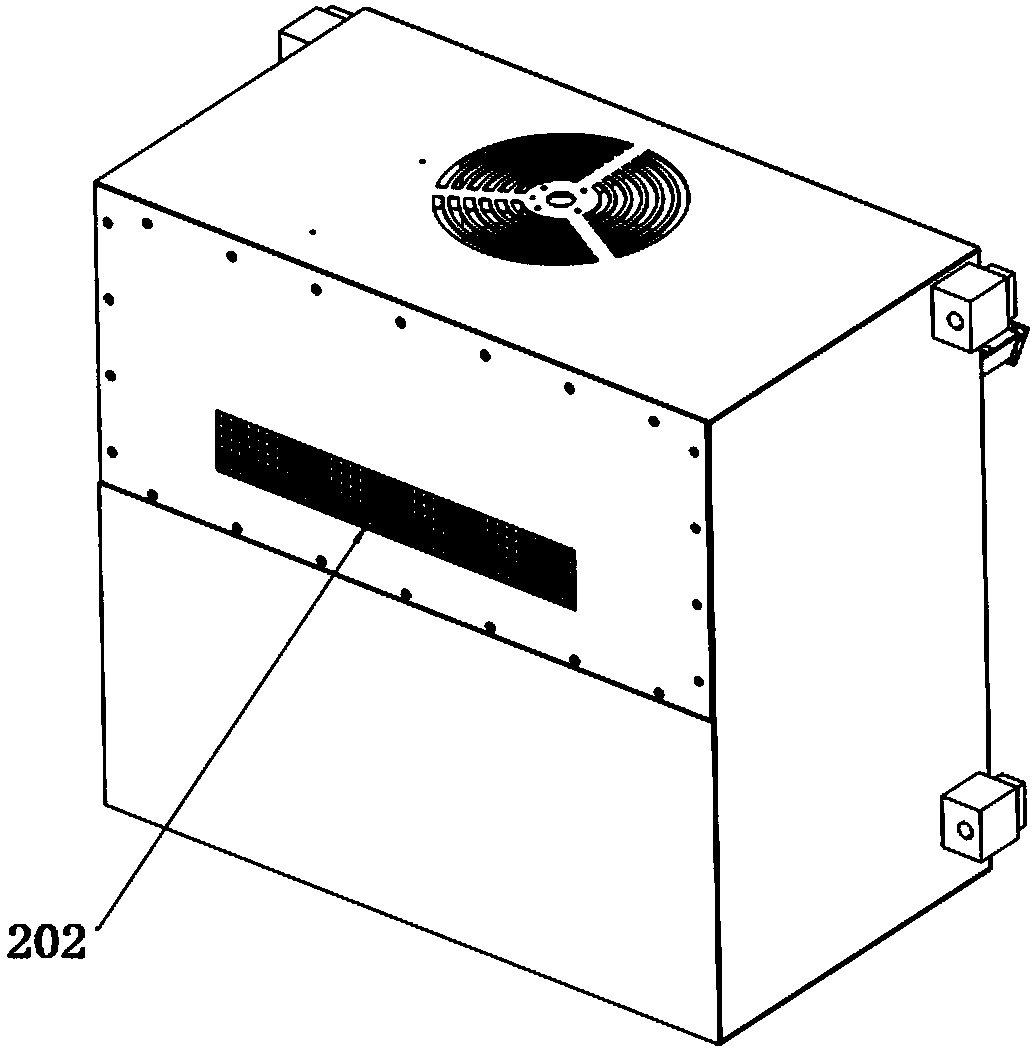Charging generator
A charging machine and warehouse technology, applied in the direction of current collectors, electric vehicles, electrical components, etc., can solve the problems of heavy overall weight of the charging machine, high energy consumption of train operation, and large radiator, so as to reduce the energy consumption of train operation, Improved cooling efficiency and reduced weight
- Summary
- Abstract
- Description
- Claims
- Application Information
AI Technical Summary
Problems solved by technology
Method used
Image
Examples
Embodiment Construction
[0019] In order to make the present invention more obvious and understandable, the specific implementation manners of the present invention will be described in detail below in conjunction with the accompanying drawings.
[0020] Such as figure 1 , image 3 and Figure 4 As shown, a charging machine includes a front compartment 1, a rear compartment 2 and a partition plate 3 separating the front compartment and the rear compartment, and also includes a radiator 4, which is installed At the mounting opening reserved on the partition plate, the radiator is mainly composed of a mounting surface 401 and a number of cooling fins 402 extending from the mounting surface. The gap between the radiator and the partition plate Preferably, the gap between the radiator and the partition plate is sealed with a sealant; the installation surface is arranged in the front compartment, and the cooling fins are arranged in the rear compartment. The shell forming the front compartment and the ...
PUM
 Login to View More
Login to View More Abstract
Description
Claims
Application Information
 Login to View More
Login to View More - R&D Engineer
- R&D Manager
- IP Professional
- Industry Leading Data Capabilities
- Powerful AI technology
- Patent DNA Extraction
Browse by: Latest US Patents, China's latest patents, Technical Efficacy Thesaurus, Application Domain, Technology Topic, Popular Technical Reports.
© 2024 PatSnap. All rights reserved.Legal|Privacy policy|Modern Slavery Act Transparency Statement|Sitemap|About US| Contact US: help@patsnap.com










